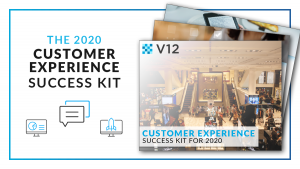Political campaigns have always spent heavily on advertising. The earliest American elections featured candidates circulating expensive printed pamphlets to help convince voters. Dwight D. Eisenhower was the first U.S. Presidential candidate to seize the power of television advertising in 1952 with a series of commercials entitled “Eisenhower Answers America.” More recently, with its efficiency, scale and targeting capabilities, digital advertising has been an incredibly powerful tool for campaign managers. Many experts attribute Barack Obama’s 2008 Presidential victory to its campaigns expert usage of data, social media, and digital marketing strategies.
The main goal of every campaign naturally is to persuade enough voters to support its candidate and to ensure those voters make it to the polling booth on Election Day. Candidates and campaign managers build a two-pronged strategy for spending money to persuade and turn out voters. To inform and persuade, the campaign mounts an advertising blitz across multiple mediums, focusing on key and swing states. In parallel, a field infrastructure is built and deployed to reach undecided voters with a more personal touch – typically through door knocking and/or phone calls as well as sending reminders and offering rides to the polls.
Prior to elections in the 21st century, advertising options were pretty simple: direct mail, radio, television and occasionally newspaper ads. Despite recent advancements in “addressable” TV advertising, television is best leveraged when it makes sense to target a large portion of the respective viewing area.
For instance, a city council campaign in one of 50 districts in New York City may be wasting their money on television. A U.S. Senate campaign that covered all of New York City, however, would make sense as the campaign is trying to reach a much larger swath of voters. A similar calculus can be applied to radio, although some radio stations have smaller footprints and audience reach. That left direct mail – letters or pamphlets mailed directly to voters off a list – as the best bet for candidates seeking to make a personal appeal.
With the advent of the Internet and the increasing adoption of social media, digital advertising has become an attractive option for political advertising. These emerging channels enable candidates and campaign managers to reach their desired audience with ease and scale.
In 2008, the same year that then-Senator Barack Obama earned acclaim for his outreach to young voters on social media, digital ads made up just $ 22 million of the $ 6.2 billion that local, state, and federal campaigns spent on advertising. For the 2016 presidential election between Donald Trump and Hillary Clinton, a whopping $ 1.2 billion is projected for online/digital advertising – this is over 10% of the total projected $ 11.7 billion overall spend for the 2016 presidential cycle.
Overall, digital advertising affords campaigns the ability to target with great precision – sometimes even down to the zip code level. And the rise of data-driven programmatic media empowers campaigns to operate their targeted digital advertising campaigns with unparalleled scale, efficiency, and control. For example, the ability to quickly pause and/or update creative messaging and targeting is especially important in today’s 24-hour news cycle with often shifting narratives. And it’s not just Hillary and Donald – local and regional candidates are also increasingly relying on political advertising in the digital space to help persuade and turn out voters.
With campaign managers and senior campaign staff stretched thin, most turn to media buying firms to purchase their “traditional” television and radio advertising.
For digital ad campaigns, however, self-serve programmatic platforms are making it easy for the campaign staff to execute strong digital ads campaigns without spending a fortune. These platforms allow campaign and field managers to carefully oversee their media buys and adjust them accordingly.
Even with limited resources, campaign staff can apply similar field campaign strategies to their online advertising. Different messages can be directed at different segments of the population and adjusted on the fly. Even within a city, particular neighborhoods can receive tailored messages according to their voters’ priorities. And programmatic self-serve platforms provide political advertisers access to scores of third-party data, as well as the enablement of first-part data targeting based on website visitors, CRM lists, and voter lists. This type of targeting is even more precise than the previous gold standard of direct mail.
At their core, political campaigns hope to find advantages over their opponents and exploit them relentlessly. In 2016, campaign managers and field teams at all levels of government need every possible tool to press their advantages. Programmatic media buying is an essential tool for every campaign, even the smallest local races. And with the usage of smart advertising technology platforms and firms, targeted digital ad campaigns can help candidates inform, persuade, and turn out voters more effectively and efficiently than ever before.
Digital & Social Articles on Business 2 Community(63)


